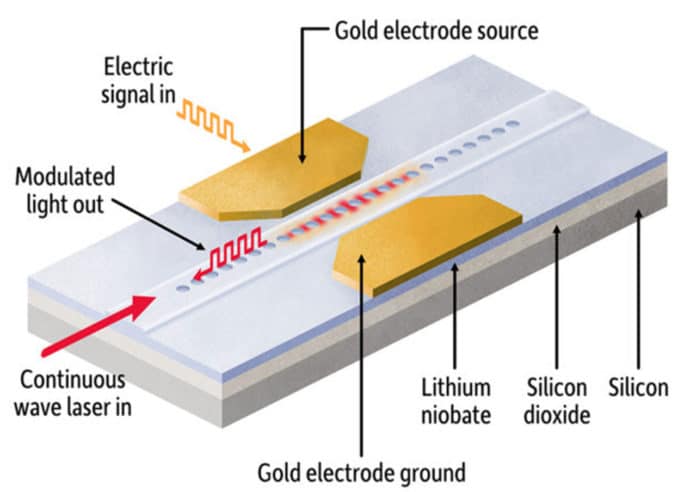Modern advanced photonic integrated circuits require dense integration of high-speed electro-optic functional elements on a compact chip that consumes only moderate power. Energy efficiency, operation speed, and device dimension are thus crucial metrics underlying almost all current developments of photonic signal processing units.
Electrical engineers at the University of Rochester have developed a new way to control light. It moves through integrated circuits, paving a research avenue in communications, computing, and photonics research. Using a widely adopted material, scientists have created the smallest electro-optical modulator yet.
This modulator plays a vital role in the photonics-based chip- controlling how light moves through its circuits.
Scientists used a thin film of lithium niobate (LN) bonded on a silicon dioxide layer to create not only the smallest LN modulator yet but also one that operates at high speed and is energy efficient.
Qiang Lin, professor of electrical and computer engineering, said, “This “paves a crucial foundation for realizing large-scale LN photonic integrated circuits that are of immense importance for broad applications in data communication, microwave photonics, and quantum photonics.”
“Because of its outstanding electro-optic and nonlinear optic properties, lithium niobate has become a workhorse material system for photonics research and development.”
“However current LN photonic devices, made upon either bulk crystal or thin-film platform, require large dimensions and are difficult to scale down in size, limiting the modulation efficiency, energy consumption, and the degree of circuit integration. A major challenge lies in making high-quality nanoscopic photonic structures with high precision.”
Lin said, “The modulator project builds upon the lab’s previous lithium niobate use to create a photonic nanocavity—another key component in photonic chips. At only about a micron in size, the nanocavity can tune wavelengths using only two to three photons at room temperature—the first time we know of that even two or three photons have been manipulated in this way at room temperatures.”
Other coauthors on the modulator project are postdoctoral associate Yang He ’20 (Ph.D.) and graduate students Jingwei Ling ’18 (MS), Usman Javid, and Shixin Xue of Lin’s lab.
Journal Reference:
- Li, M., Ling, J., He, Y. et al. Lithium niobate photonic-crystal electro-optic modulator. Nat Commun 11, 4123 (2020). DOI: 10.1038/s41467-020-17950-7
